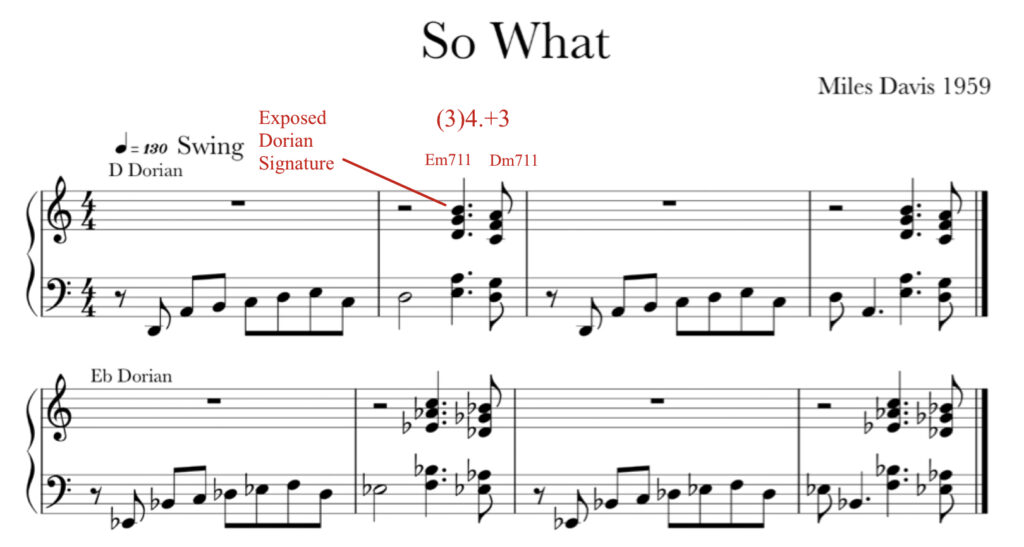Miles Davis - 1959
Anyone with even a passing interest in Jazz has probably come across the song ‘So What’, first heard on the 1959 Miles Davis recording ‘Kind of Blue’. We offer some snippets here as an introduction to a larger discussion on what would later come to be called “Modal Jazz”. On the page “Introduction to Modal Jazz” (Link) we look at the objectives and strategies that lead to the development of this influential approach to improvisation.
The first 16 bars of ‘So What’’ is based on the Dorian mode. We know this because it uses the scale tones of D minor (relative to F major with one flat) but with one exception: the ‘b’ is natural instead of flat.
The two chords are an Em7(11) moving down to a Dm7(11). Because the preceding bass line so clearly outlines a Dm7 the II -I chord sequence sounds something like a cadence (tension and release). The chords are a stack of three intervals of a 4th with a major 3rd on top.
‘The ‘B’ section simply moves the whole thing up a minor second for eight bars.

Example 2 shows the first few bars of the Miles Davis solo and John Coltrane’s. It is interesting to note that both solos begin by emphasizing D minor but neither dwell on the signature Dorian 6th – b natural.

Compare what bar 6 of The Miles Davis solo would sound like if it was in D minor rather than D Dorian.

The discussion above just talks about a song that uses a couple of modes. It really says nothing about why some people call it “Modal Music”. We get into the actual components of modal music in the page called “Introduction to Modal Jazz” (Link). Finally you will want to have a look at the analysis of ‘Impressions’ by John Coltrane (Link). It uses the same harmonic structure.
